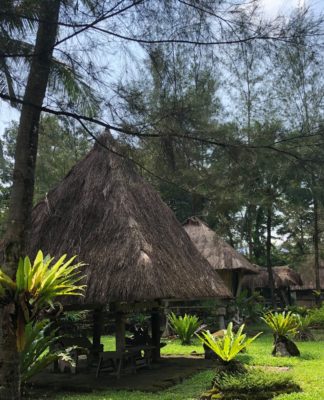 MUCH hedging about the sinking of MV Princess of the Stars has brought to the public the discovery of a toxic pesticide endosulfan trapped inqside the transit ship.
MUCH hedging about the sinking of MV Princess of the Stars has brought to the public the discovery of a toxic pesticide endosulfan trapped inqside the transit ship.
Since human-interest stories were already juiced up regarding the event, the media then focused their reports on endosulfan which is still locked up inside the sunken ship.
But why place a toxic pesticide inside a passenger ship in the first place? For a while, Del Monte Philippines, Inc. and Sulpicio Lines, Inc. were embroiled in a finger-pointing hullabaloo before the Board of Marine Inquiry.
Del Monte said the cargo was labeled poisonous. Sulpicio countered: it wasn’t.
If there is one thing clear, it’s endosulfan being a pesticide that kills insects on food and non-food crops. Toxicologists say it can have adverse effects on the aquatic system simply because it’s a pesticide. Although it can degenerate fast in water, it can have a longer life if it sticks to soil particles floating at the sea surface or at the bottom.
Early Sept. 1, Titan Salvage, a marine salvage and ship wreck removal company, started the retrieval operation of the 10 metric tons of endosulfan and the more than 100,000 liters of bunker fuel from the ill-fated vessel.
The Philippine Technical Divers jointly retrieved the bodies trapped inside the ship.
Sulpicio forged a 7.5-million-dollar contract with Titan; so much trouble for a slight mistake.
Actually, this was not the first time this nation encountered an endosulfan dilemma.
Veteran journalist Howie Severino tackled the issue in a story that won for him a Jaime V. Ongpin Award Excellence in Journalism in 1994.
In 1994, Severino published his story, “German chemical giant evades ban on deadly products.”
He wrote that “a German multinational company Hoechst (pronounced herxt) AG expanded its sales in the country (after) obtaining favorable court ruling from a friendly judge, intimidating state regulators with threats of legal action, and suppressing criticism of their products with multimillion-peso lawsuits.”
Severino found out that Hoechst legal counsel Cesar Cruz and the Makati Regional Trial Court judge during that time, Julio Logarta, used to lawyer for Marblecraft, Inc. Marblecraft is owned by Far East Bank and Trust Company. The bank belonged to “Far East Piggeries, which is also listed as an incorporator of Hoechst Philippines, Inc.”
Why the German company successfully evaded the ban wasn’t hard to tell from thereon.
Hoechst successfully hurdled the government’s endosulfan ban one right after the other with the help of Logarta. It was only when Logarta was ordered to move out of the case that Hoechst lose its ability to blackmail the government, the journalists, and the scientists who explained endosulfan’s adverse effects.
Eventually, the Philippine Fertilizer and Pesticide Authority (FPA) “suspended the licenses of all Hoechst agro-chemical products.”
After Severino’s exposé, the company complied with FPA.
Now with endosulfan threatening to wreak havoc in the Sibuyan Sea, environmental groups, one of which is Earth UST, reiterated calls for a total ban on endosulfan, describing it as a “ticking toxic bomb.”
In 1993, the toxic was banned. But after two years, the government allowed its “restricted use” to control an insect-borne crop disease that threatens the pineapple export industry in Bukidnon.
Sonia Calleja, FPA director for Northern Mindanao, told the Philippine Daily Inquirer that the agency had authorized Del Monte and Dole to import endosulfan three years ago despite the 1993 ban because “(it was) confident that (Del Monte) has enough expertise and resources to properly handle the substance.”
But Calleja acknowledged the dangers posed to people and the environment by the pesticide.
To date, Denmark, Germany, Netherlands, Sweden, Belize, and Singapore ban endosulfan. Its use is also not allowed in the rice fields of Bangladesh, Indonesia, Korea and Thailand.
If only the FPA perpetually banned Dole to use endosulfan in 1993, the Princess of the Stars disaster would’ve ended after the retrieval operations of the bodies trapped inside the ship. No more 7.5-million-dollar contract. No more finger-pointing. No more threats.
Clearly, Severino did a good job as a journalist. But it was his commitment to the environment—coupled with an ounce of bravery to muckrake erring officials—that mattered. It takes strong conviction, and of course political will, to save the environment.
This happens to be the spirit that people lack nowadays. It’s as if protecting and helping nature have been reduced to elementary Sibika lessons: recycle plastic bottles, segregate trash, and switch off the lights.
Those things do help but times have changed. We are already plunged into a dismal environmental state and the Earth is not getting any healthier. People need not to be satisfied with the basics. We are more than what we can do now.















